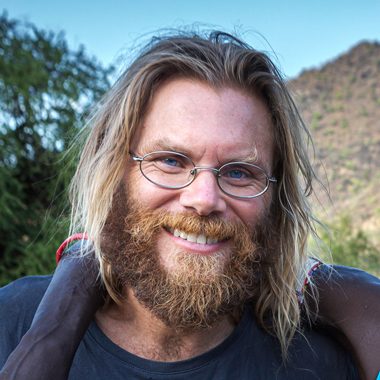The Menit or Me'en tribe lives between the fertile mountains of Shasha and the Omo River Valley, in the southern Ethiopia. They are about 150,000 and their economy is mainly based on agriculture. Within this village, the 'kola' group lives more isolated in the drier part of the valley and is dedicated to raising cattle. The 'kola' spend part of their free time decorating their bodies and faces with clay and ash to obtain 4 colors: yellow, red, blue/grey and green... The beauty of these paintings and the physiognomy of the Menit Kola men remind us of the images of the Nuba of Sudan photographed in 1974 by Leni Riesfenstahl. It is for this reason that in Last Places we have baptized them as 'the nubas of Ethiopia'.
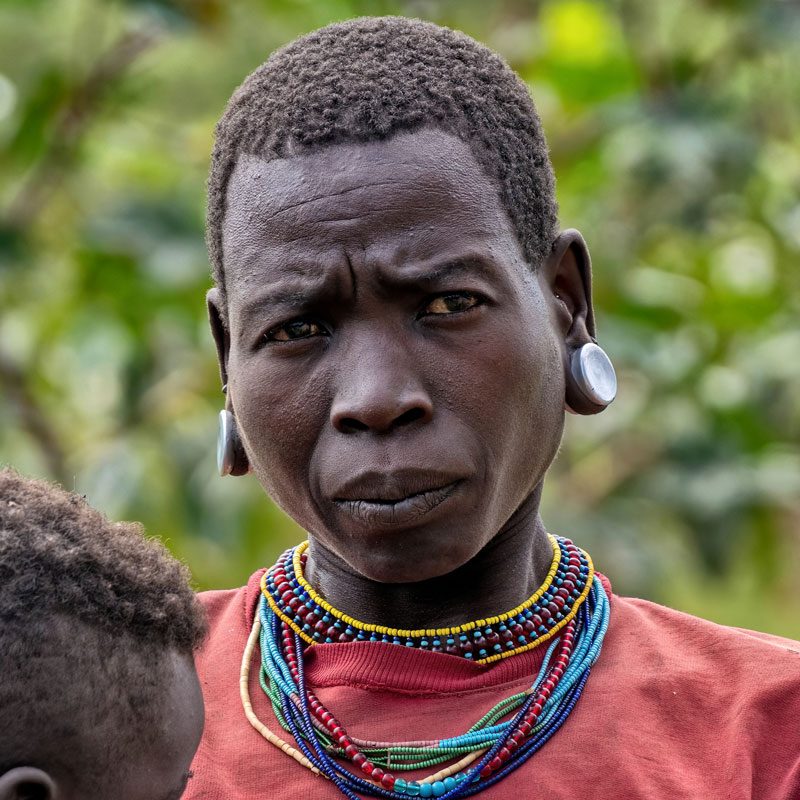
Menit adult woman with traditional aluminum earrings and beaded necklaces.
Alongside the body painting, the menits pierce their earlobes and insert circular aluminum earrings. The women decorate their forearms and ankles with bronze and aluminum bracelets. Scarification is still alive among the young menits. They decorate legs and arms with abstract figures and sometimes imitate animals that they often hunt, such as antelopes or rabbits. Traditional hairstyles to show motherhood, mourning or marital status are still alive among animist menits (the most traditionalists). The custom of covering the body with a black cape and fur is preserved during funerals. Menit art is manifested in their bodies and also in the pottery (now in decline) and in the beauty of their houses. The menits decorate the 'backbone' (wooden post) of their dwellings with beautiful geometric motifs.
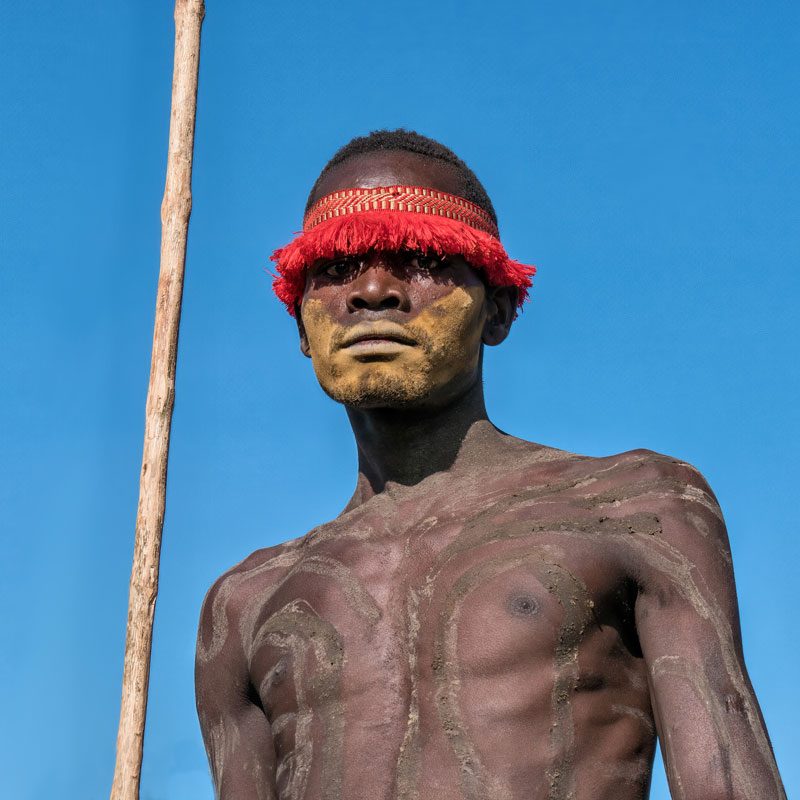
Young menit 'kola' with body paint and a textile headband. The menits, like so many tribal peoples, incorporate outside items in weekly markets. A few years ago many menit menuse these ribbons to beautify their face.
The Last Places team of anthropologists has been visiting and living with this tribe since 2016 and has seen how the traditional culture was mutating due to the influence of the Protestant church that is based in the town of Shasha. Many women who once pierced their earlobes have ditched their beautiful foil earrings. Body painting is also in decline among the mountain menits and we have only seen that the practice is maintained among the most conservative of the plains. The Me'en language, despite its vigor, is not taught in local schools and is in danger of being engulfed by the Amharic language.
The Last Places team is talking to local authorities (both traditional and government) so that they see that cultural tourism can bring positive things to the community. For this they must protect the traditional culture and the landscape environment. We propose that the Plain Menit or 'kola' are protected from mission expansion and that their unique culture can attract a strong economy based on responsible tourism. The talks began in 2022 and we hope that little by little the idea that the local tribal culture must be respected and valued will be consolidated.
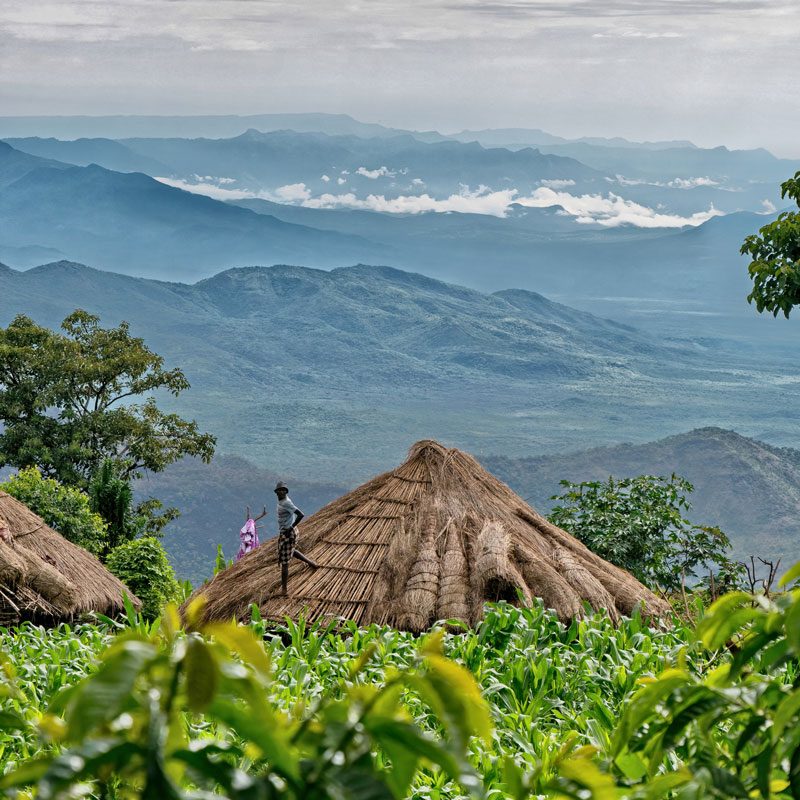
Menit man fixing the roof of his house. In the background you can see the plain where the 'menits kola' live, dedicated to grazing cows.
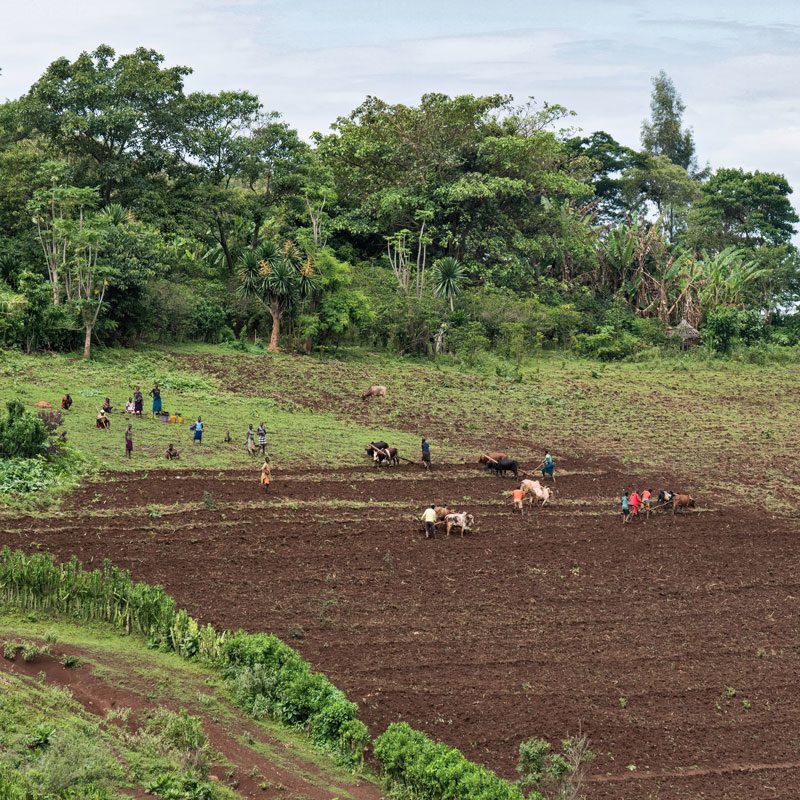
The Mountain Menits are engaged in subsistence agriculture. From the 1930s they adopted the Roman plow introduced to the region by Italian settlers.
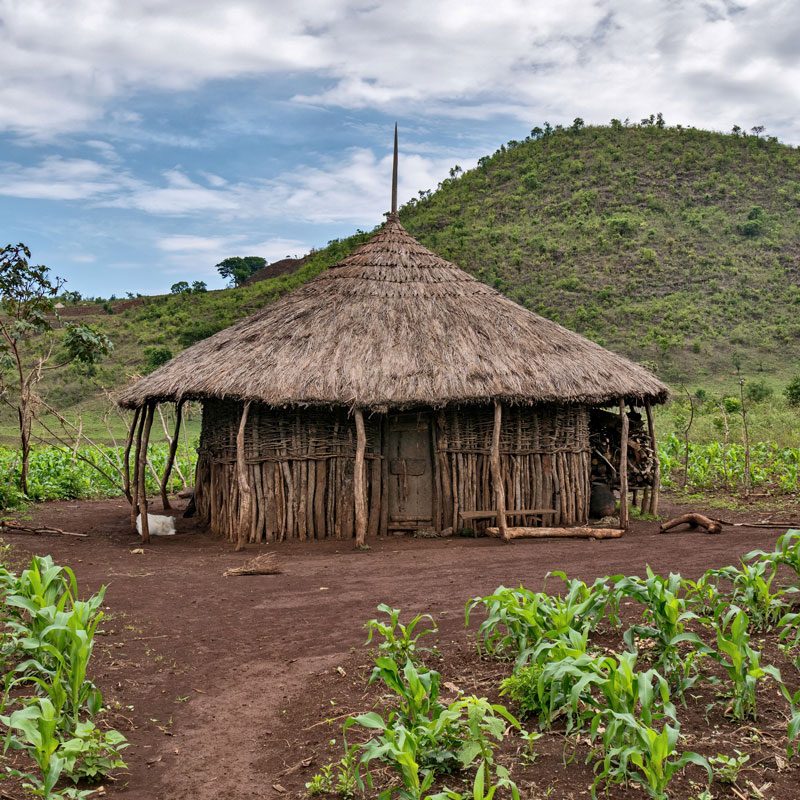
Menit traditional housing.
The Menits build isolated dwellings, not compact villages like other tribes in Ethiopia. A characteristic element of vernacular menit architecture is the central column that supports the house and is usually decorated.
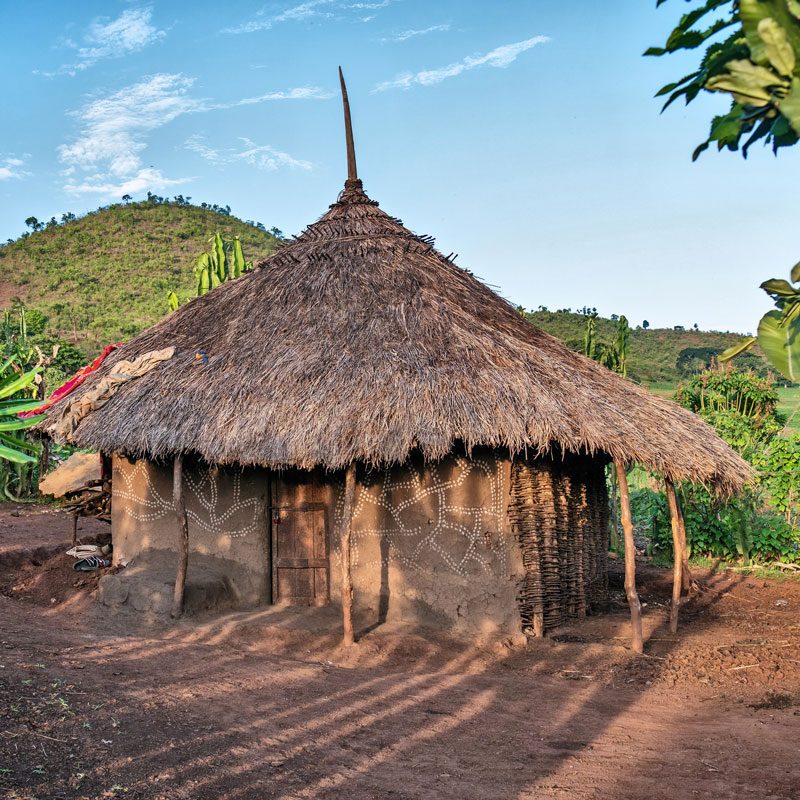
Menit house beautifully decorated with abstract motifs reminiscent of traditional body decoration.

Menit barn where they keep the grain and the tubers of the harvest.
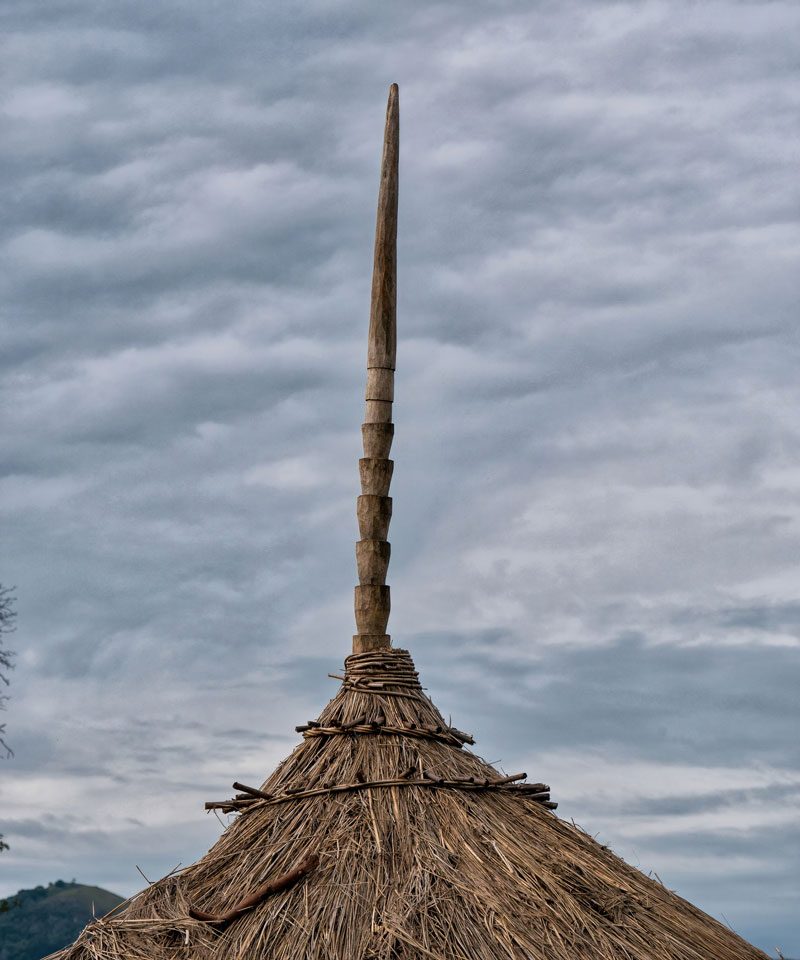
Vertebral column of carved menit dwelling. It may have an erotic connotation (phallus), a symbol of fertility and prosperity.

Carved column tip transformed into a Christian cross. A clear symbol of the influence of the Protestant missionaries among the mountain Menits.
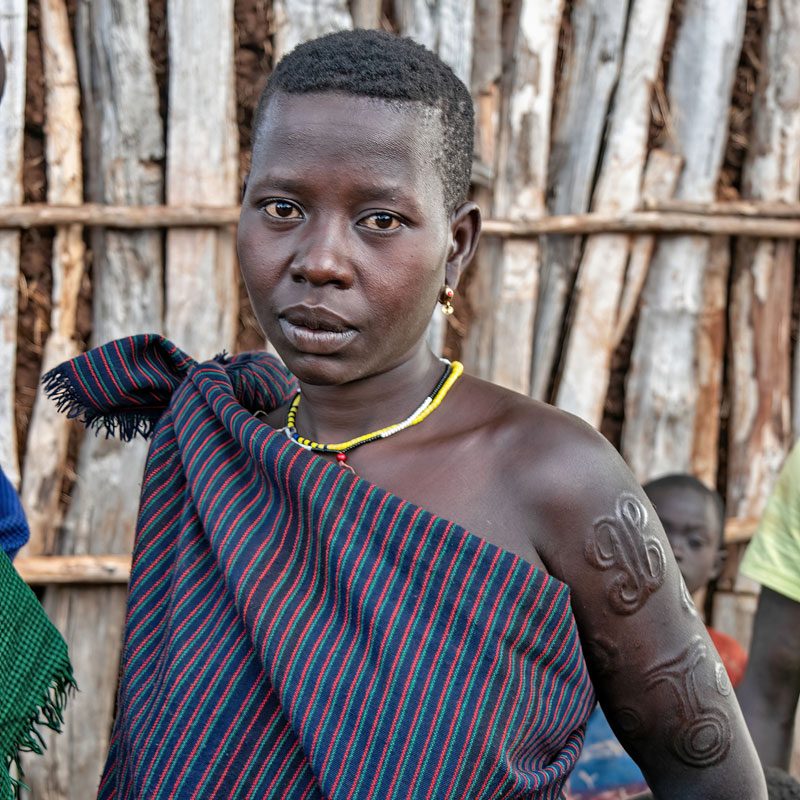
Young plain menit woman or ‘kola’ with the characteristic scarifications of her generation and social group.
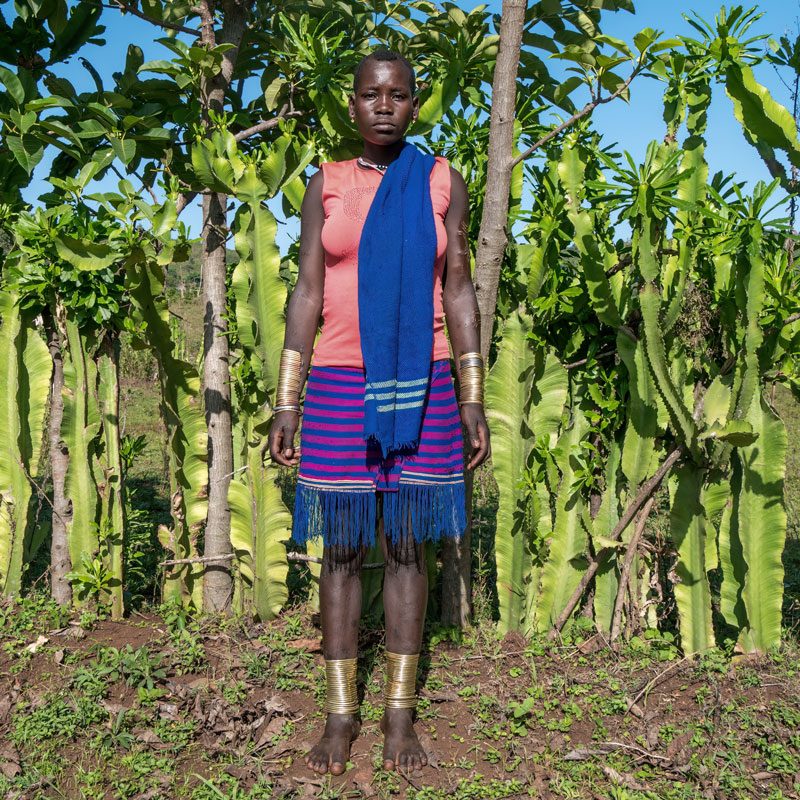
Young menit woman with a textile skirt decorated with fringes (this type of fabric is found in markets such as Shasha). This type of fabrics replaced the skins from 1991 (fall of the communist party and economic opening of the country). Metal alloy jewelry indicates that you are ready to get married.
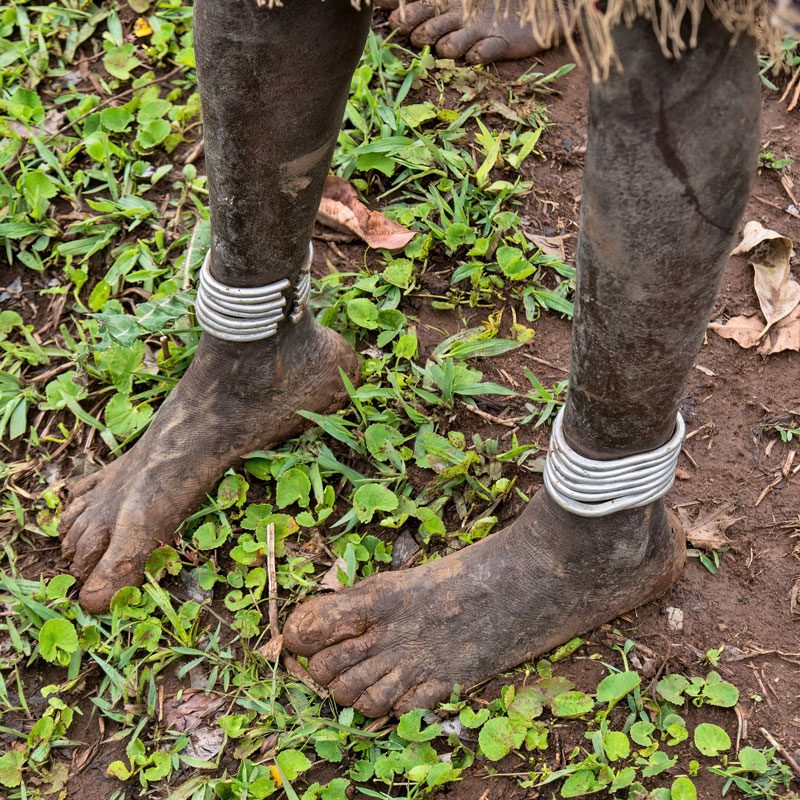
Traditional decoration of older woman menit. Aluminum anklets made by a menit blacksmith.
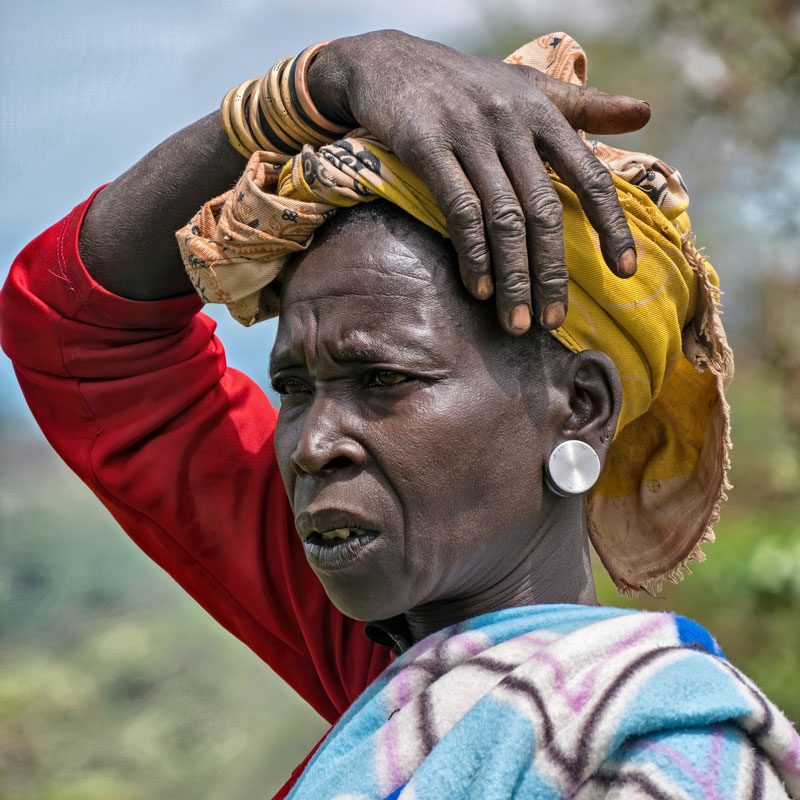
This woman belongs to the latest generation of mountain menits to wear pierced ears with circular aluminum earrings. Protestant missionaries are eradicating this tradition, associating it with the 'pagan' and primitive world.
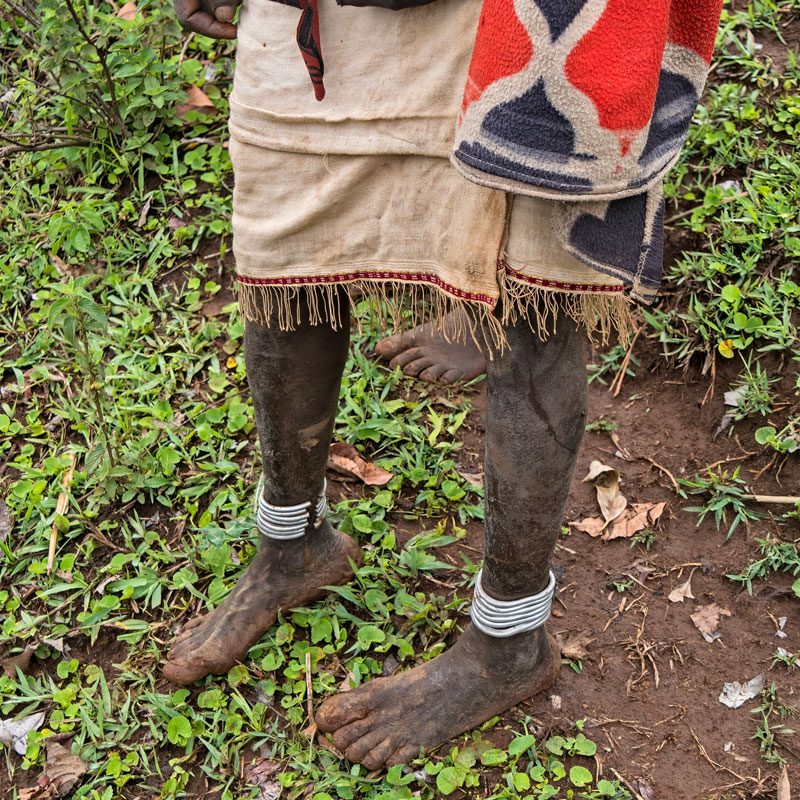
'Traditional' cotton fabric that replaced fur. Young women prefer the most colorful fabrics.
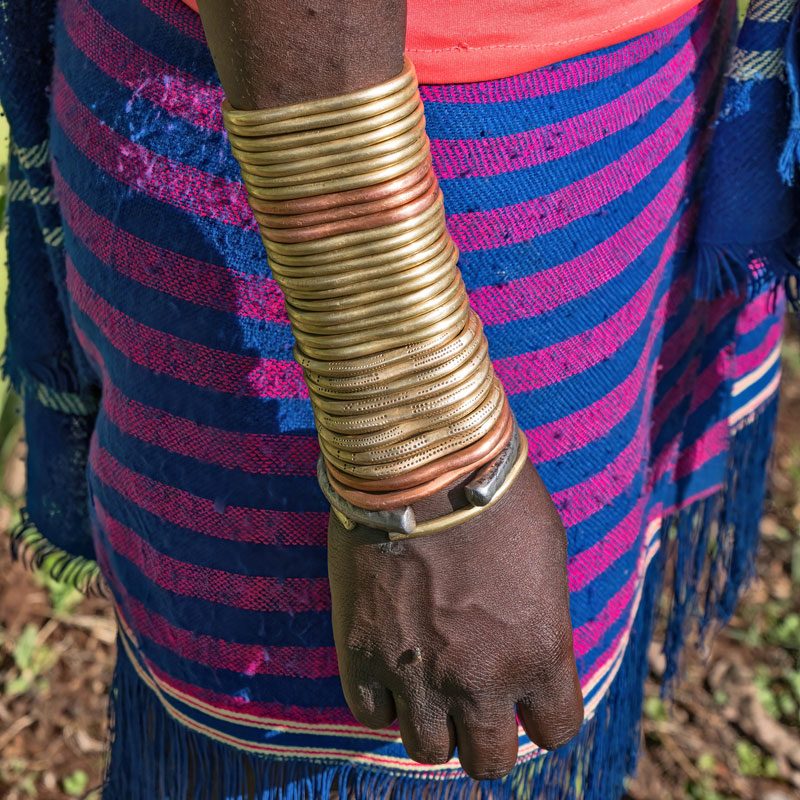
Mursi-influenced bronze bracelets (neighboring tribe, on the other side of the Omo River), copper and aluminum. This jewelry indicates the social and civil status of this woman; single and upper class (her family owns more than 1000 head of cattle).
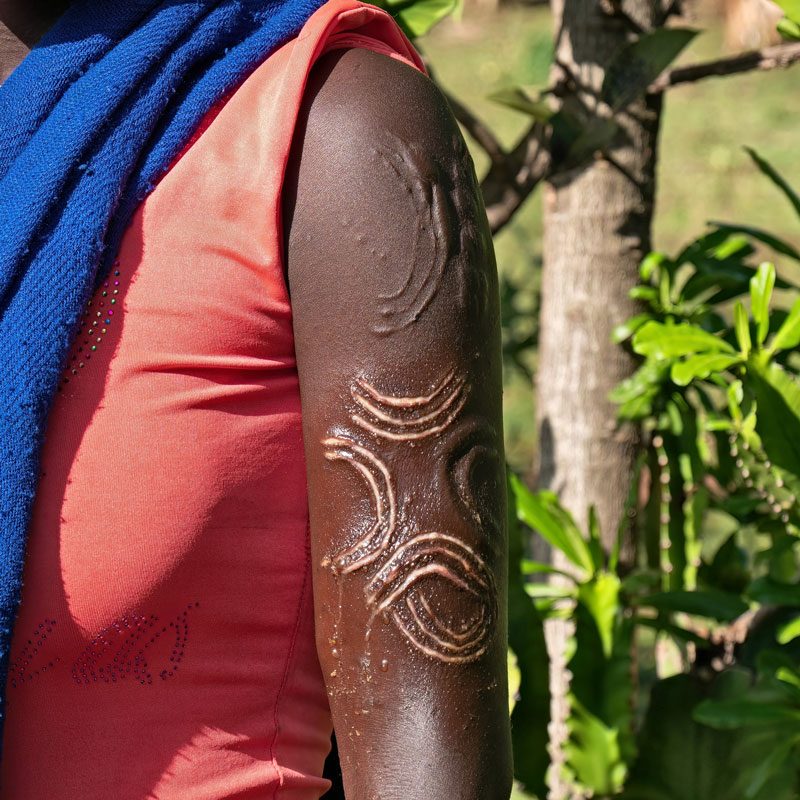
Body scarification is still alive among the young plain menits (kolas). Here we can observe freshly made scarifications.
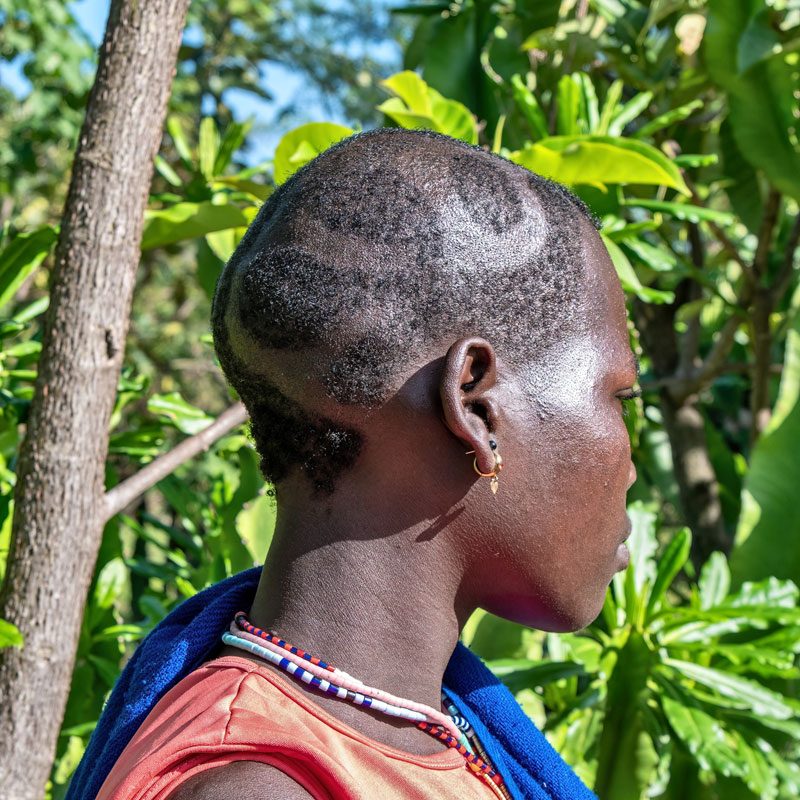
'Sensual' hairstyle of young single menit at Shasha market.

Traditional menit baby carrier made of goatskin and decorated with seeds and metal plates. These types of baby carriers are increasingly rare in the region as they are being replaced by cloth or towels.
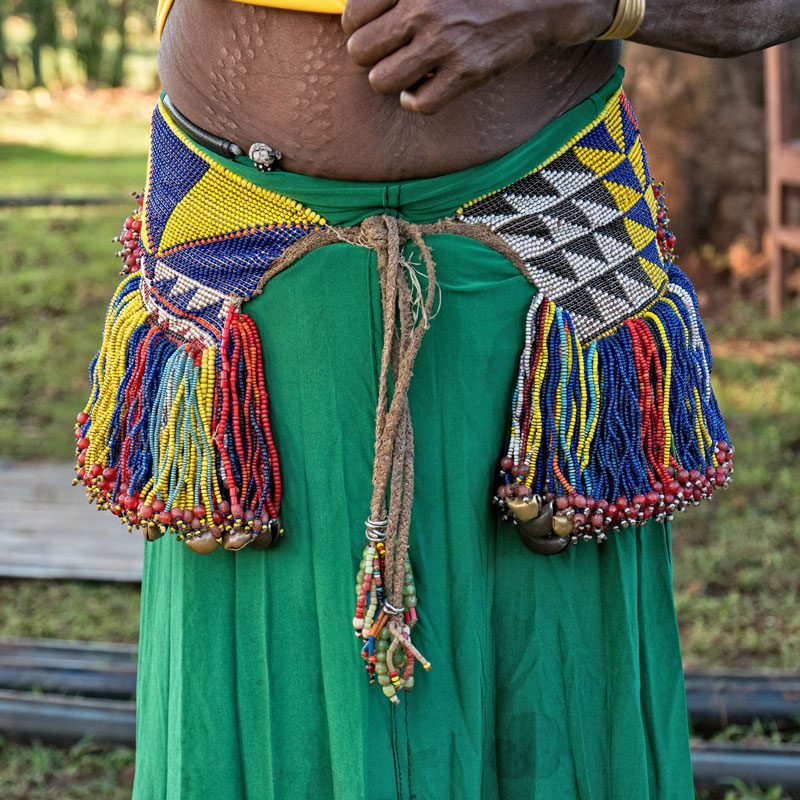
Loincloth made with glass and plastic beads, with metal bells as a final finish. This type of clothing is only worn during ceremonies such as funerals and weddings.
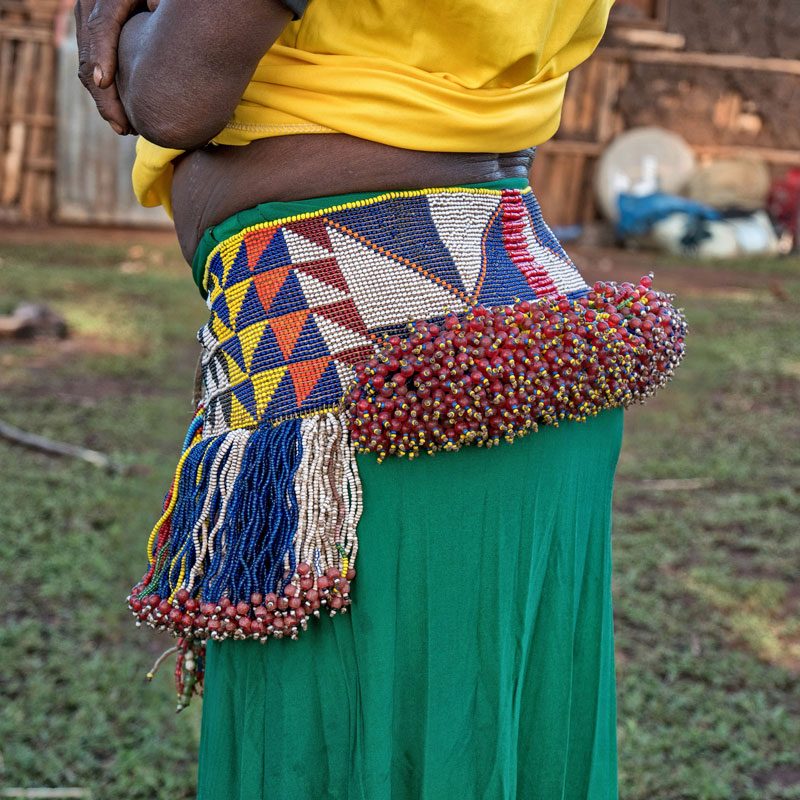
Back part of menit female loincloth, decorated with red plastic beads.
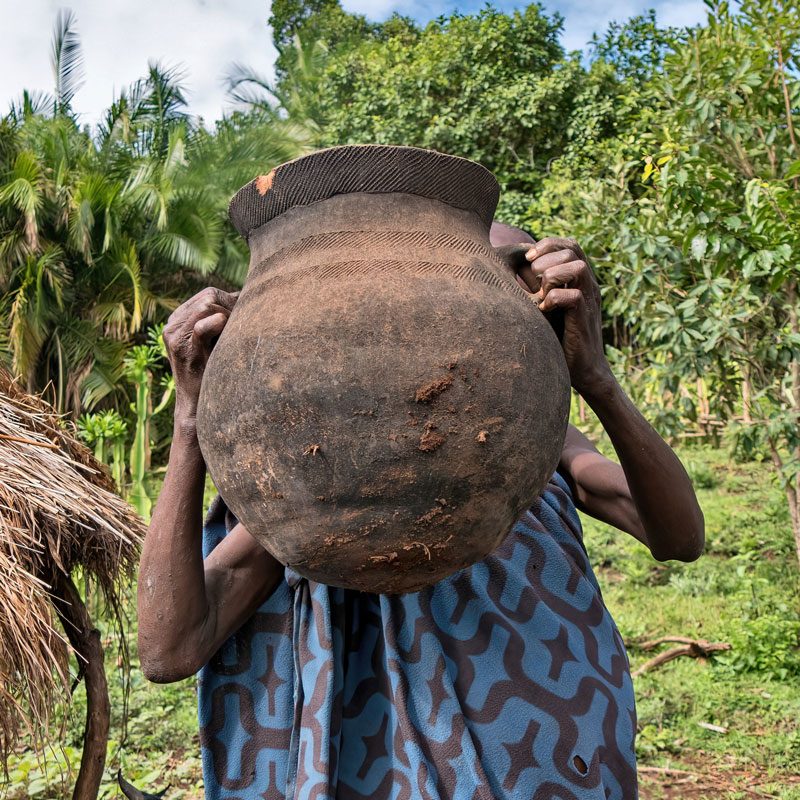
Menit women continue to make ceramic pots of great beauty. The emergence of plastic containers is having an impact among potters who see how there is less and less demand for traditional pots and plates.
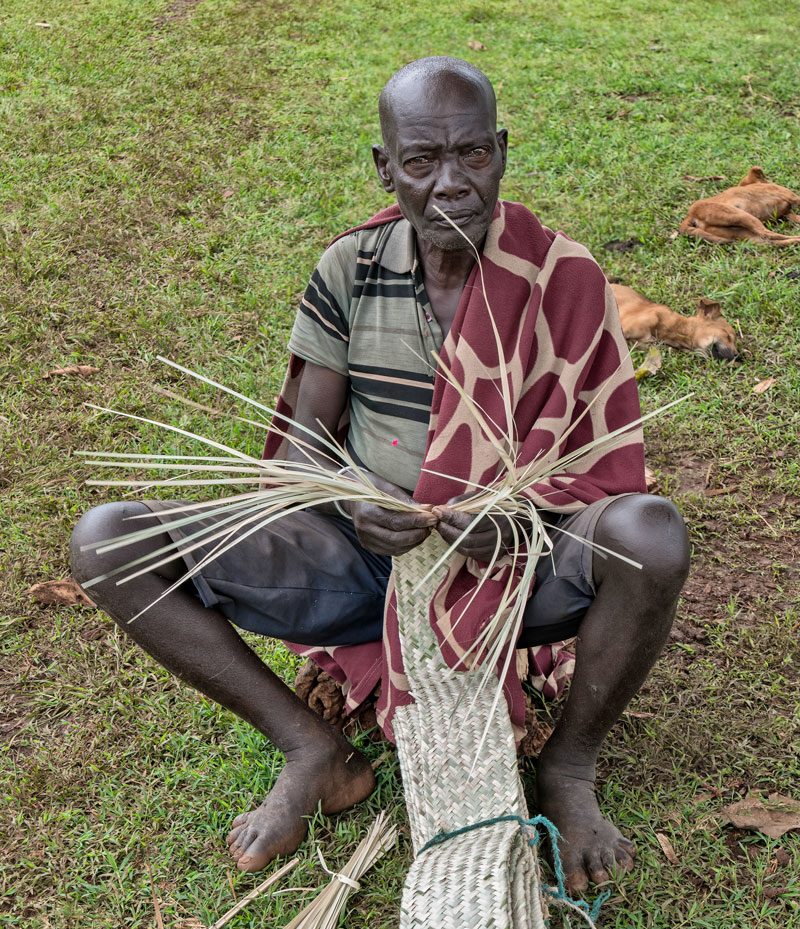
Elder menit making a palm leaf mat. Crafts that will soon disappear due to the introduction of manufactured plastic objects in regional markets.
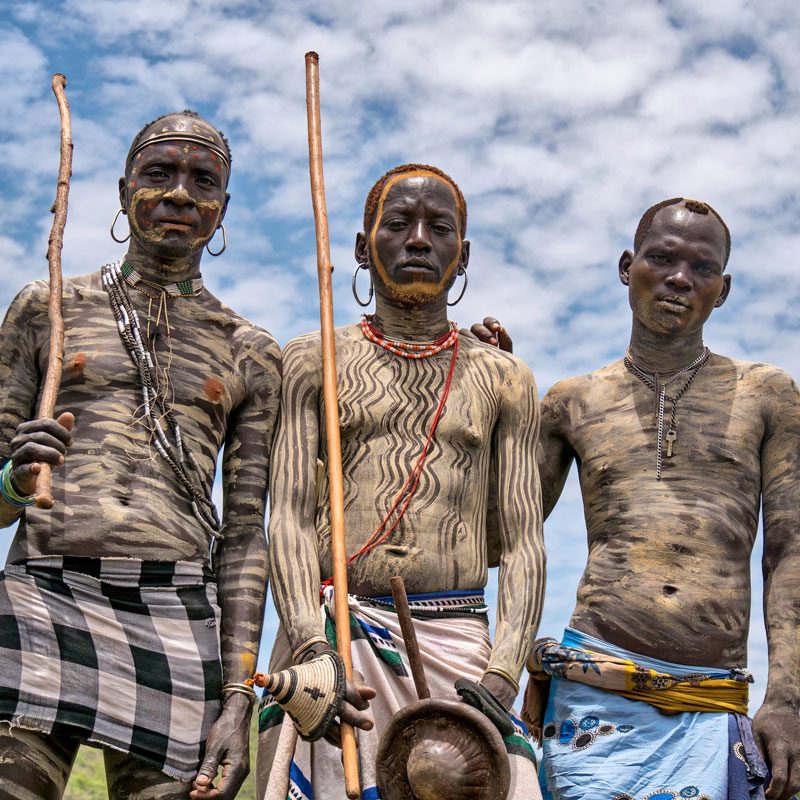
Young menit warriors of the ‘kola’ sub-group. They wear traditional face and body paint for the holidays. The young man in the middle carries the traditional menit shield for fighting made of buffalo skin.
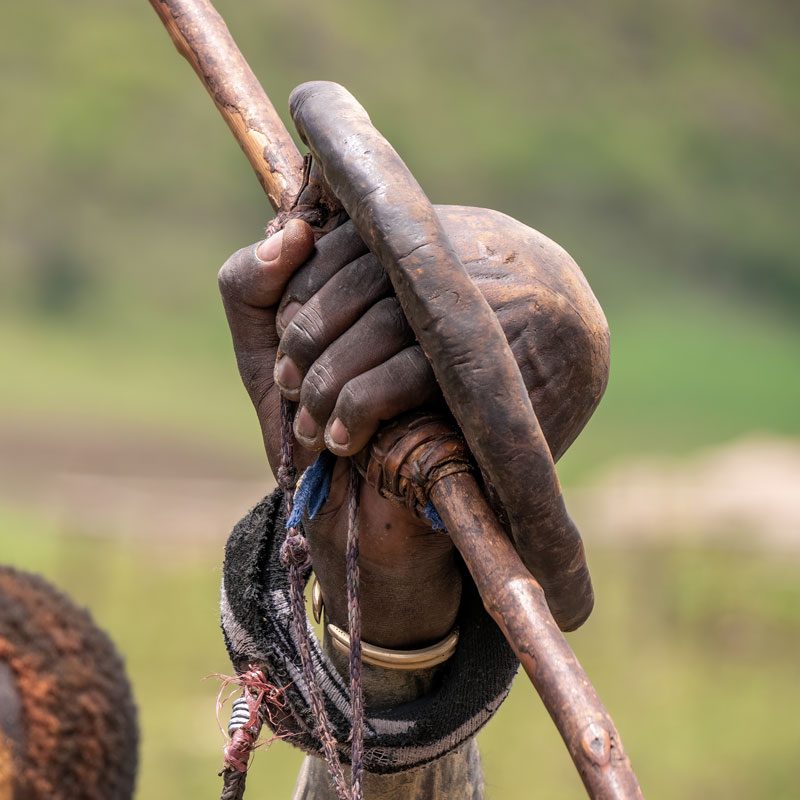
Traditional shield for the menit fight.

Young 'kola' menits dressed for a traditional festival.
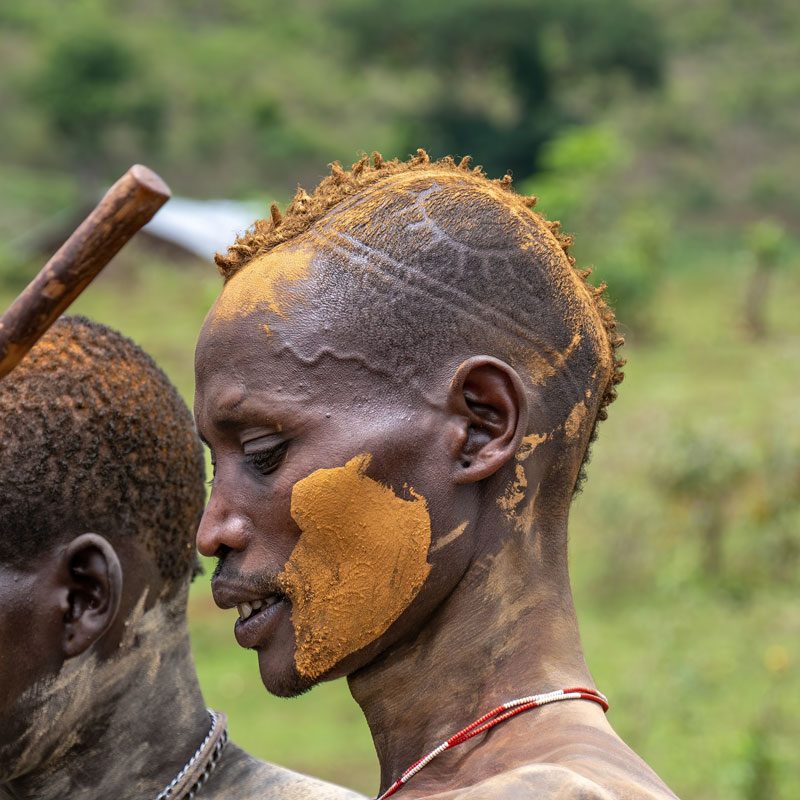
Traditional menit hairstyle showing that the young man is not yet married. Yellow cheek paint is obtained from a stone found in the Shasha region.
You can learn more about the Menit/u> tribe of Ethiopia at
Photos taken on a Last Places trip to Ethiopia (April 2022) by Omar Salem.
